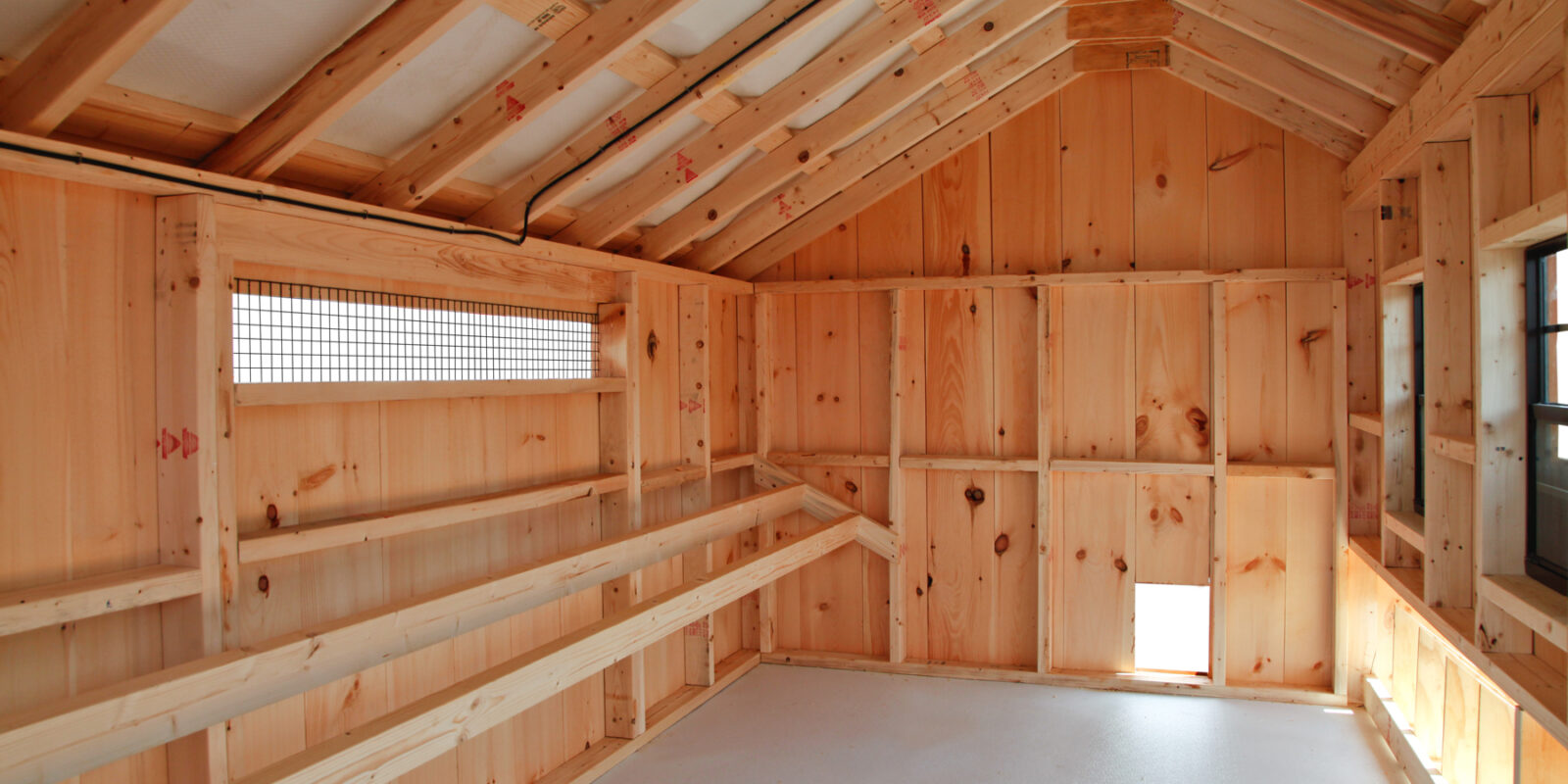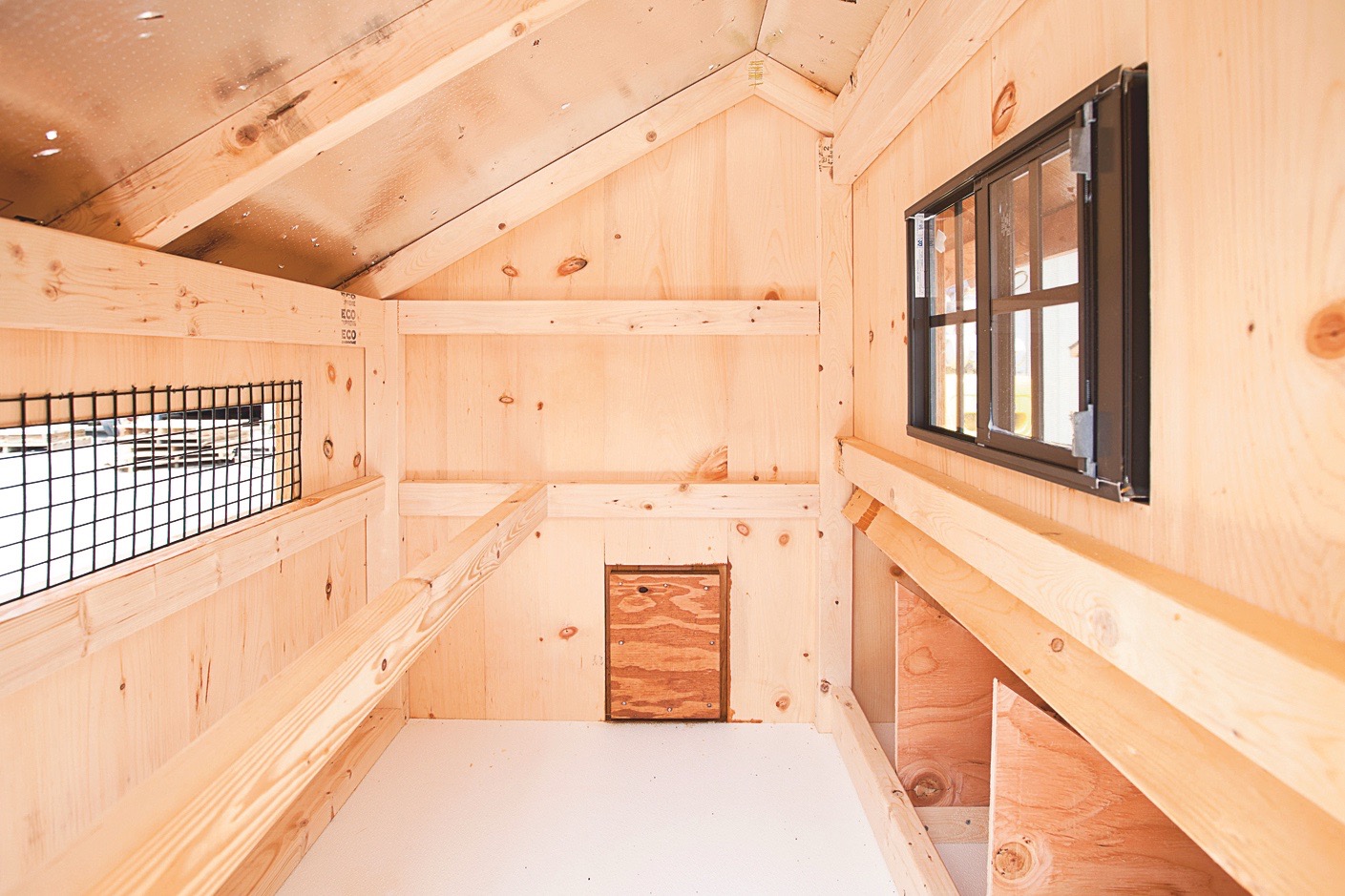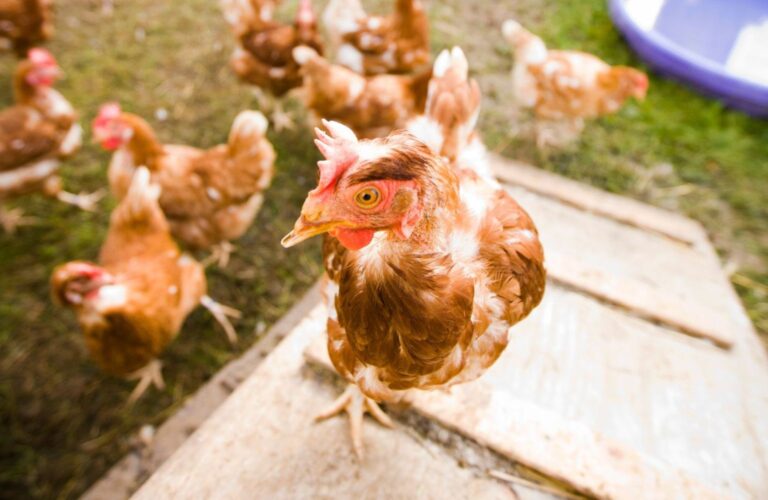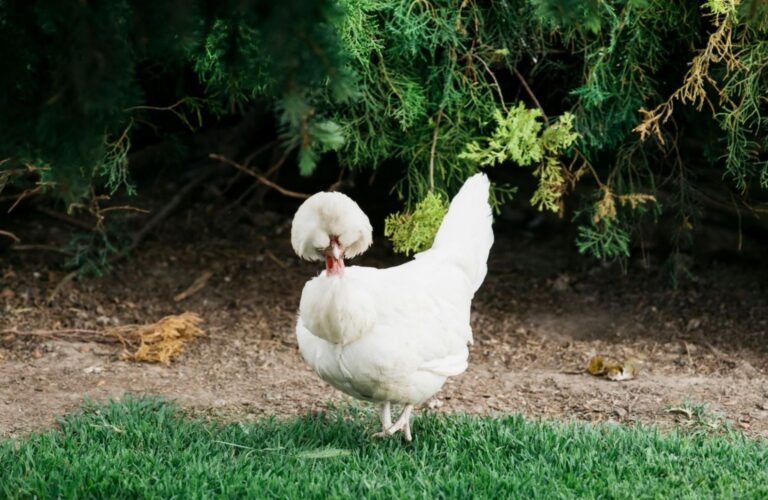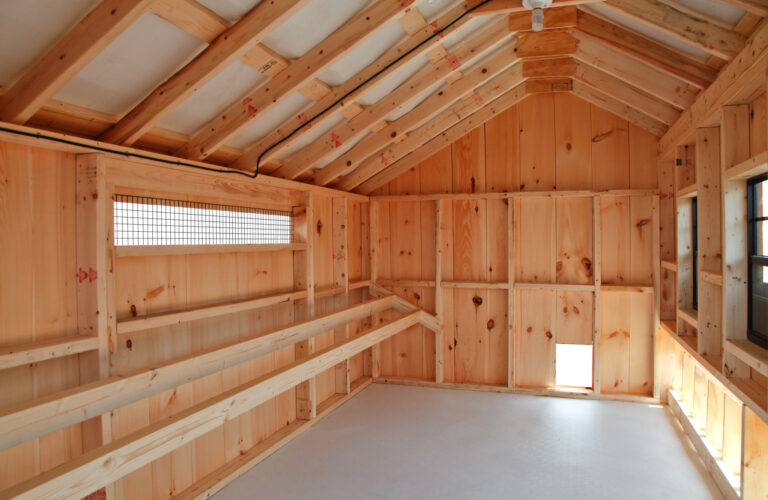Want happy and healthy chickens?
When embarking on the journey of raising chickens, one of the most important considerations is providing them with a suitable living space. A chicken coop is not just a structure for shelter; it’s a critical factor in ensuring your flock feels secure, content, and healthy in your backyard. But maybe a good quality coop seems like an expensive investment. Have you tried turning a shed into a chicken coop?
A well-built coop can offer your chickens protection from predators and illnesses, while a coop that is not up to standard can compromise their health and add stress, leading to poor egg production and an unfortunate end to your cherished flock. The significance of a chicken coop cannot be overstated. That being said, we have created some steps to help you transform your shed into a healthy living space for your friends. First, let’s look at a few reasons why a clean, comfortable, and safe coop is vital for the well-being of your feathered friends.
Benefits of Turning a Shed Into a Chicken Coop
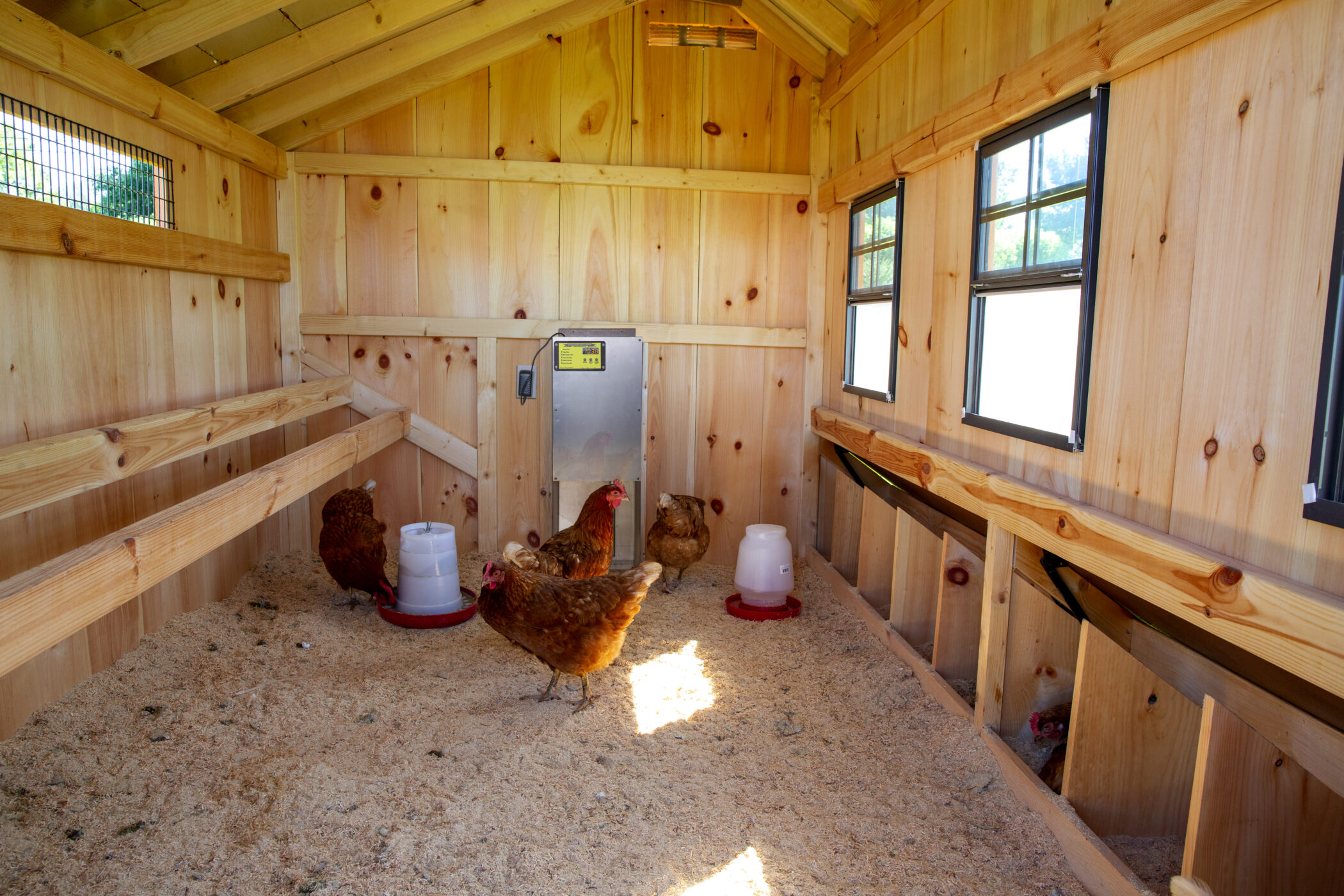
There are many benefits of keeping your chickens in a safe space like a shed-turned-coop. Aside from saving money, let’s take a look at the benefits of turning a shed into a chicken coop.
Safety from Outdoor Elements
When you decide to turn a shed into a chicken coop, you shield chickens from harsh weather conditions. The coop provides a safe and secure space for chickens to escape from extreme heat, cold, wind, and rain. It’s very important to keep the chickens warm during cold weather, as they are susceptible to frostbite and other health problems.
Protection From Predators

Turning a shed into a chicken coop provides a secure and enclosed space for your chickens to roost at night, keeping them safe from predators such as foxes, raccoons, and coyotes. The coop should be designed to prevent access to the birds from the outside, with secure locks and sturdy materials. Additionally, the coop’s flooring should be solid to prevent predators from digging their way into the coop from underneath.
A Comfortable and Safe Laying Space
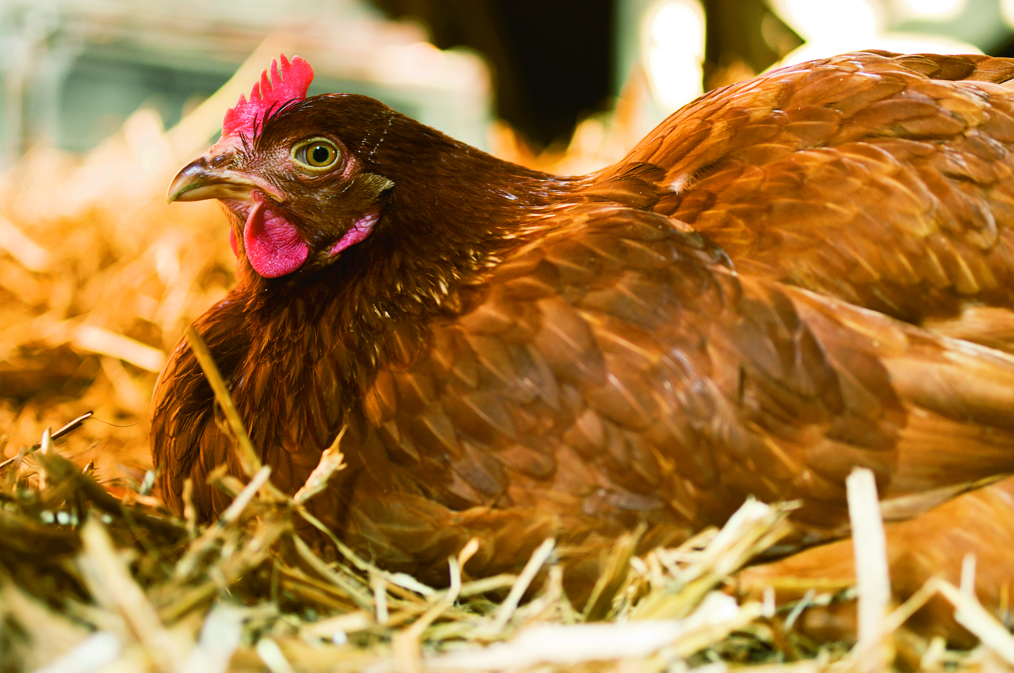
A comfortable and secure coop can help keep your chickens content and stress-free, leading to healthy and consistent egg production. It’s vital to ensure that your chickens have access to a comfortable and safe laying space, which can be achieved through a high-quality and well-maintained chicken coop.
Hygienic Living Environments
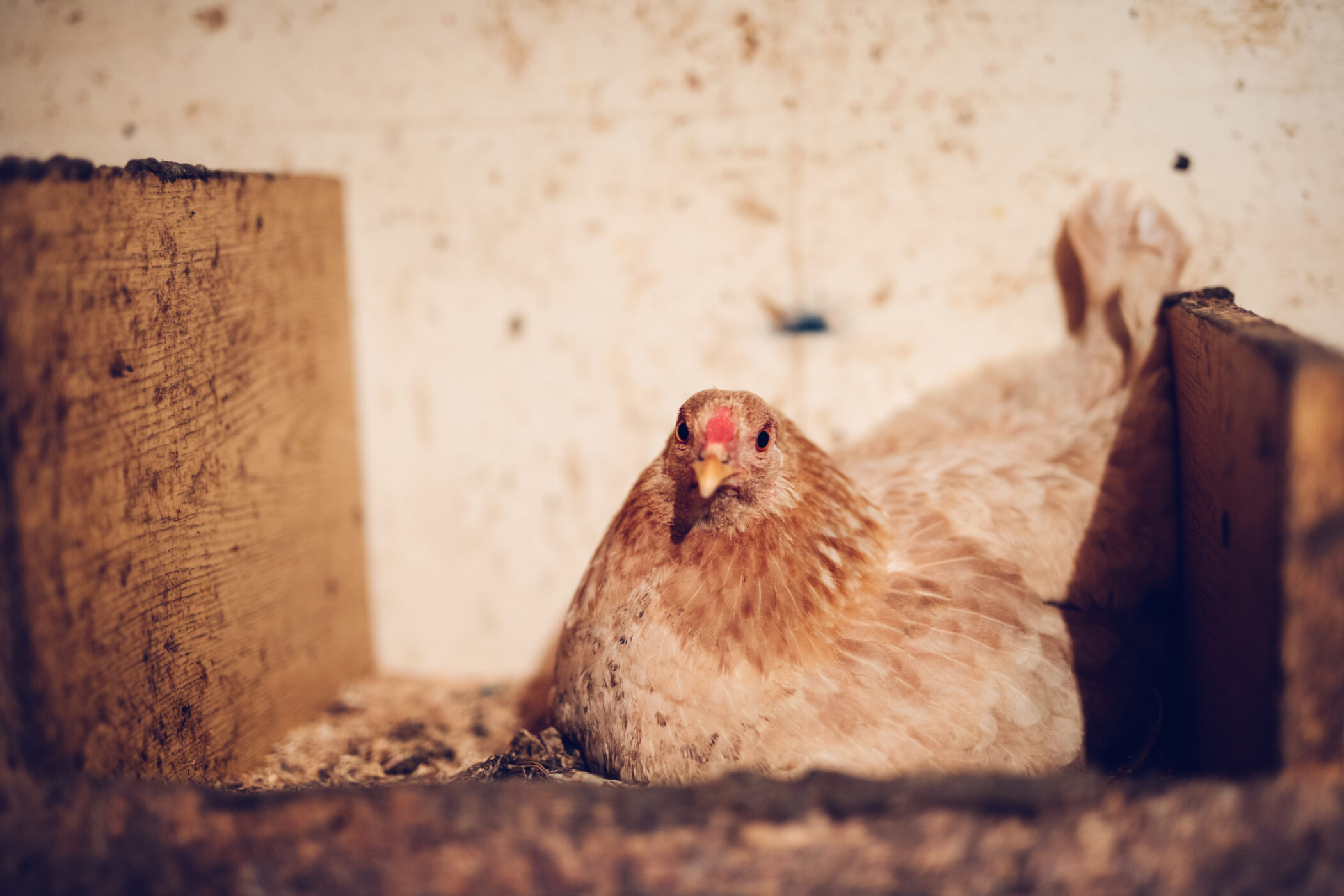
While chickens might not be as concerned about cleanliness as we are, it’s still essential to give them a home that is hygienic and clean. Regular cleaning and maintenance of your chicken coop are necessary to ensure your flock thrives in a healthy space. Clean and dry bedding helps prevent pests, disease, and unpleasant odors that could harm your flock’s health. Prioritizing the cleanliness of your chicken coop will ensure a thriving and happy flock.
Happy and Entertained Flock
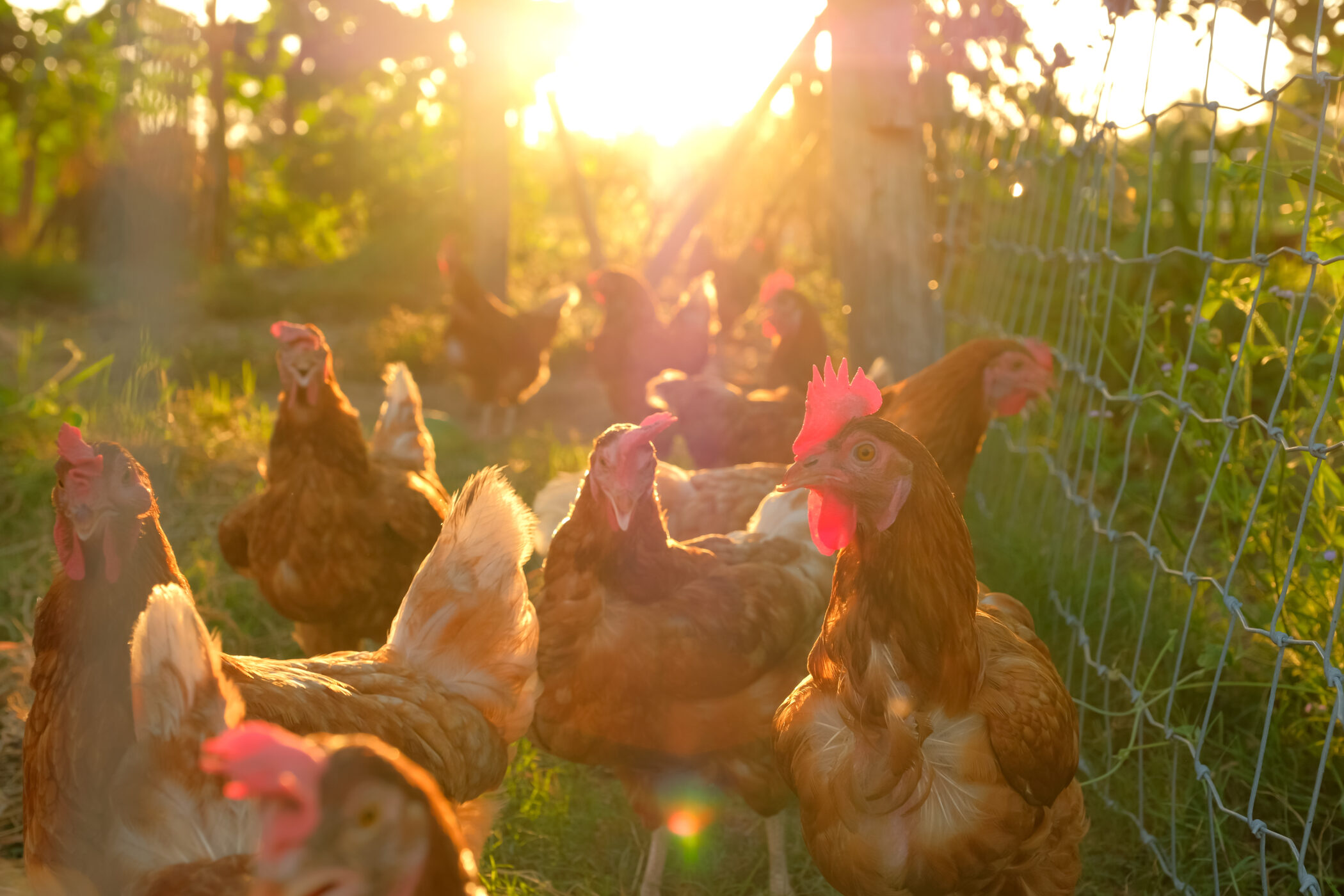
Providing opportunities for play and exploration can greatly enhance your chicken’s quality of life. By adding toys and accessories to your coop, such as a chicken swing or ladder, you can encourage your chickens to climb, swing, and peck at treats, keeping them entertained and engaged. This will promote mental and physical stimulation in your birds, giving them a happy and healthy lifestyle.
Chicken Coop Close to Your Home
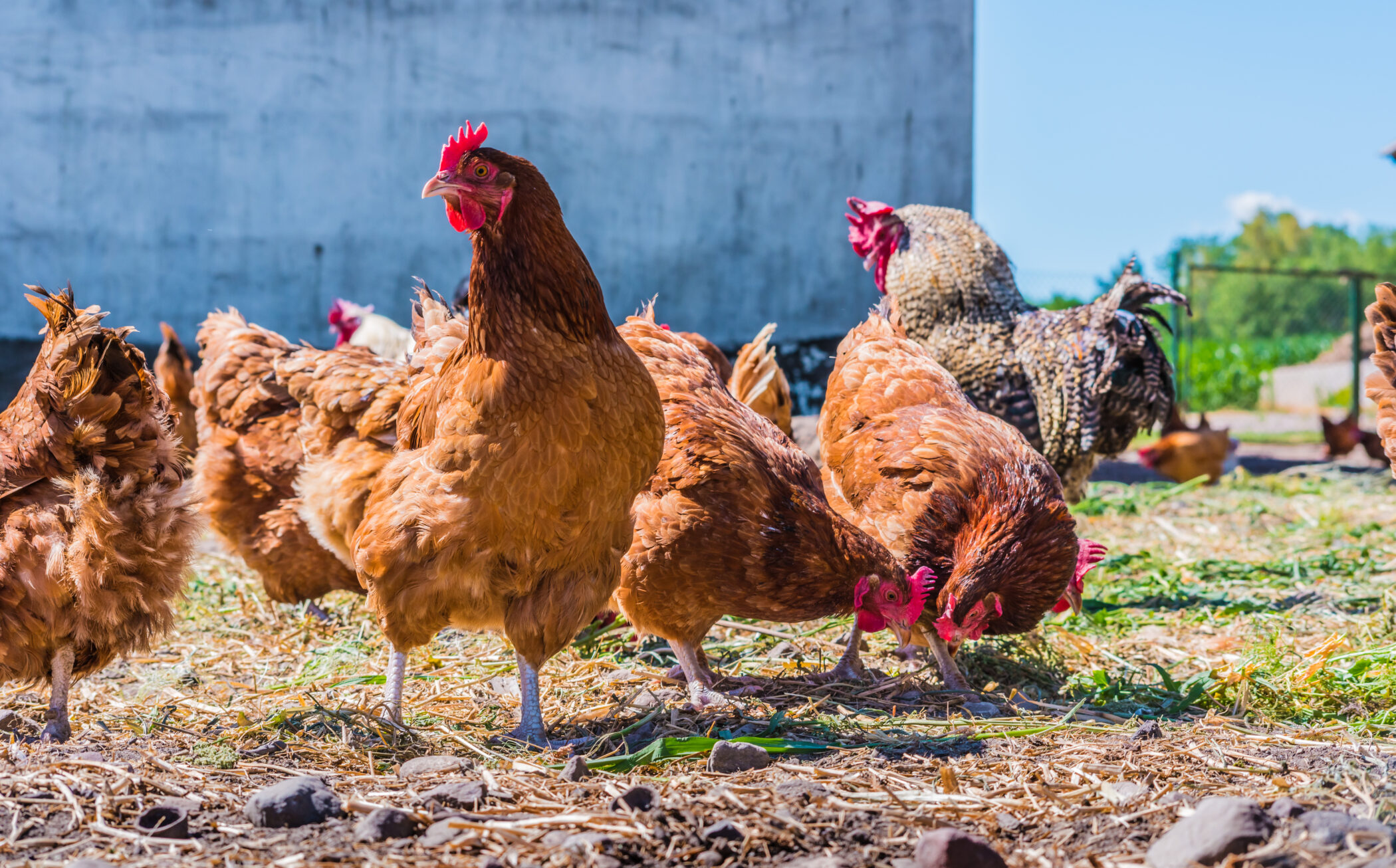
By keeping chickens in a designated area close to your home, you can easily monitor their behavior and well-being. This will help you to quickly address any issues that arise and keep them safe from predators. It also simplifies daily tasks such as cleaning, feeding, and collecting your eggs.
Three Steps to Turning A Shed into a Chicken Coop
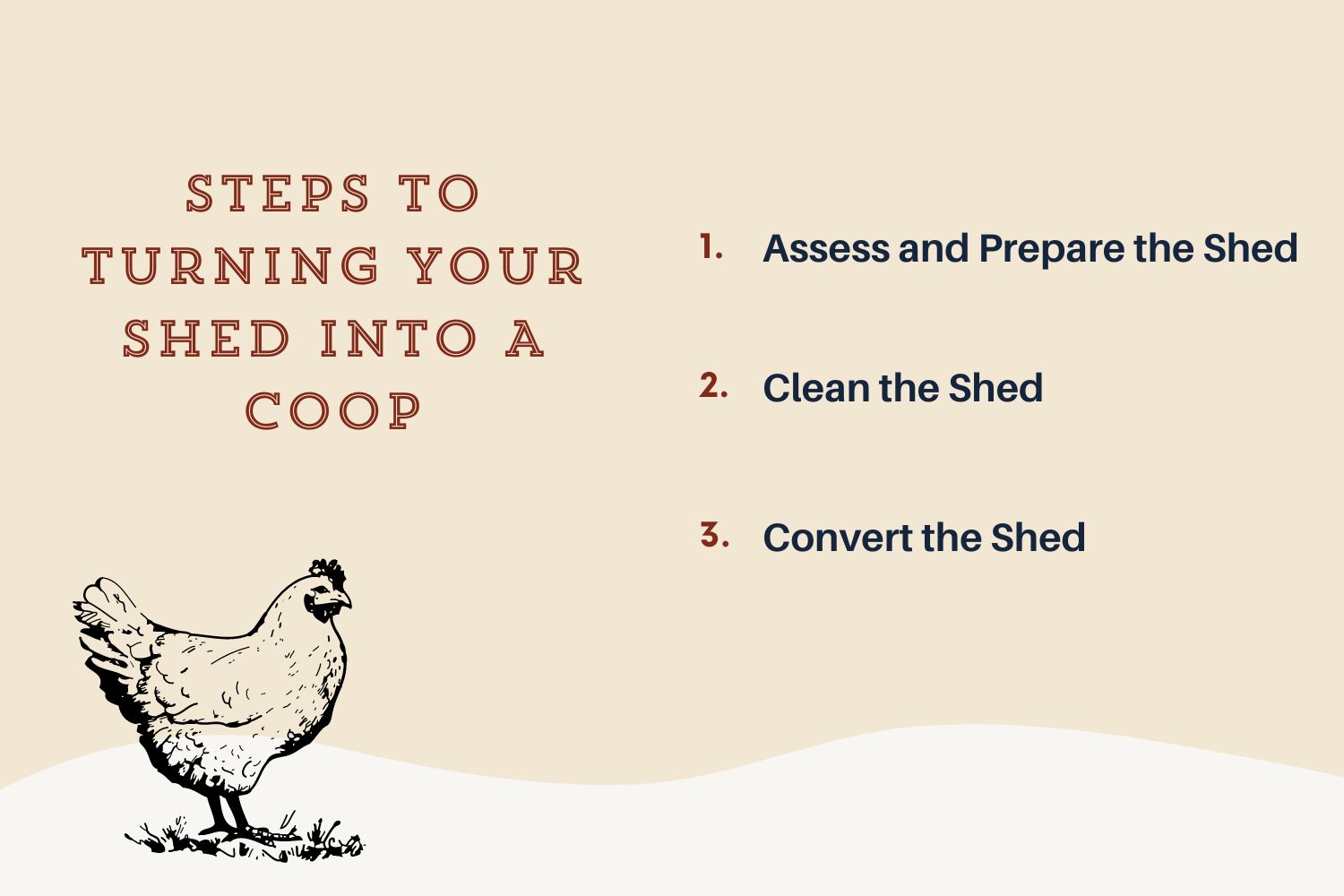
Turning a shed into a chicken coop may not be as difficult as you might think, and you won’t need to spend extra money on a new coop if you have a shed you can use.
If you are a first-time chicken farmer and would like some tips, check out our blog on raising backyard chickens.
Step 1. Assess and Prepare the Shed
The first step in turning a shed into a chicken coop is assessing it to determine if it is suitable for a chicken coop or not. Inspect the shed for any indications of water damage, rotting, or infestations. Ensure that the shed is in good structural condition and can be fortified to prevent any intrusions from predators.
Determine the Number of Chickens You Want
Before starting the conversion process, you need to know how many chickens you plan to keep. This will help you determine the size of the coop you need and how much space is required.
Plan the Layout of the Coop
When designing the layout, it is important to keep the chickens in mind and ensure that the space is practical, easy to clean and provides adequate ventilation.
Ensure Proper Ventilation and Lighting
Make sure that there is adequate ventilation to allow fresh air to circulate and prevent the buildup of harmful gases such as ammonia. You can achieve this by adding windows or vents to the coop, which will also allow natural light to enter.
During winter, you may need to install artificial lighting to provide adequate illumination for your chicken when there are fewer daylight hours. A general rule of thumb is to provide 14 to 16 hours of daylight, but you should consult with a veterinarian or poultry expert to determine the specific lighting needs of your flock.
Gather the Necessary Tools and Materials
It’s important to check that all tools and materials are of good quality and appropriate for the size and needs of your chicken coop. You may also want to consult with an expert who has all the necessary equipment to provide a safe and comfortable living space for your chickens.
Step 2: Clean the Shed
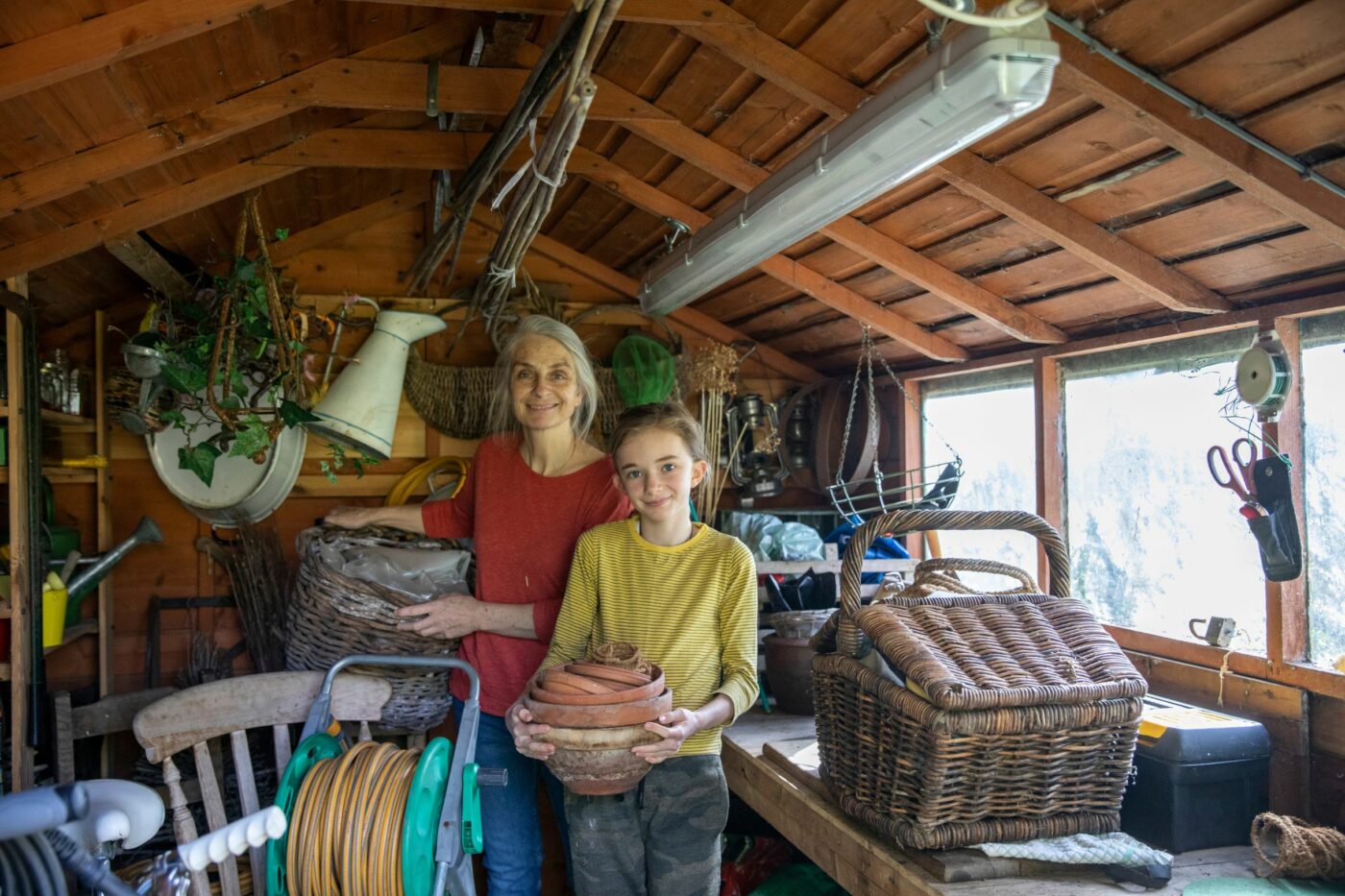
Cleaning the shed is the next step in turning a shed into a chicken coop. This helps to remove any dirt, debris, or potential sources of disease that could be harmful to the chickens.
Remove any Debris and Clutter
Debris and clutter can attract pests like rodents, insects, and spiders that can carry diseases and parasites that can harm chickens. Removing debris and clutter will make it easier to keep the chicken coop clean and prevent the buildup of bacteria and other harmful substances.
Sweep and Clean the Shed
Sweep the shed floor and use a broom to clean out any cobwebs that may have accumulated in your shed. Wash the floor with water to settle the dust, and leave your coop fresh and sparkling for your chickens.
Disinfect the Shed
Sanitizing the interior of the shed is an important step in turning a shed into a chicken coop. Disinfecting is crucial to eliminate bacteria, viruses, and other harmful microorganisms that may exist, making it an essential step when turning a shed into a chicken coop. This process ensures that the chickens live in a clean and safe environment, minimizing the risk of infections and illnesses.
Step 3: Convert the Shed
After preparing the shed by cleaning and disinfecting it, the next step in turning a shed into a chicken coop is to convert the shed itself. Your shed will be turned into a coop where the chickens will sleep, lay eggs, and take shelter from the weather, so it’s important to construct a space that is comfortable, safe, and meets their needs.
Install Extra Windows and Coop Doors if Necessary
Installing quality windows and doors will allow for proper air circulation and help prevent the buildup of harmful gasses as well. Windows will provide natural light, which is important for the health and well-being of your chicken. Chicken doors can be added to the coop and are necessary for easy access to the coop for cleaning, feeding, and collecting eggs and making it easier for you to care for them.
Install Roosting Bars
Chickens naturally roost at night to sleep, so providing a designated area for them to do so will make them feel more comfortable and secure. Roosting should be placed at a height of at least 2 feet off the ground. Also, roosting bars help keep your chickens off the ground, which can help prevent them from being exposed to harmful bacteria and parasites that can be found in soil or litter.
Add Nesting Boxes
Adding nesting boxes to your coop will make it easier for you to collect the eggs and also helps keep the eggs clean and free from damage caused by chickens stepping on or pecking at them.
Install a Ramp for Chickens
Adding a chicken coop ramp to your shed coop is an important step. Without a ramp, chickens may have difficulty getting in and out of the coop, especially if the coop is raised off the ground. Chickens are known for jumping down from high places, which can result in injuries such as broken legs or sprains. A ramp provides a gentle slope that allows chickens to walk up and down safely.
Insulate your Chicken Coop Shed
Insulation helps regulate the temperature inside the coop, keeping it warm in the winter and cool in the summer. Insulation can also prevent moisture buildup inside the coop. If you live in a residential area or have neighbors nearby, insulation can help reduce the amount of noise that escapes from the coop.
Additional Features for Your Chicken Coop
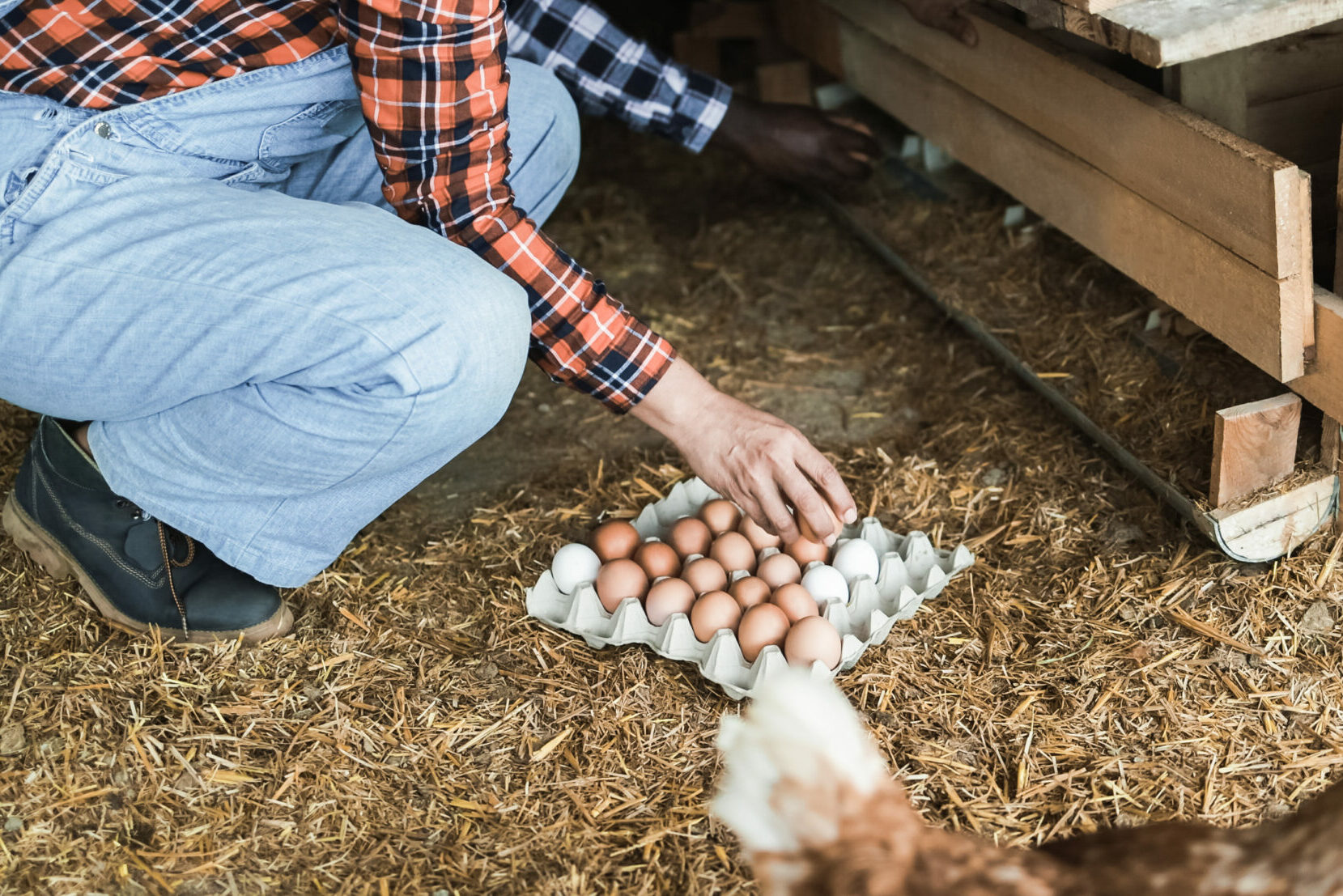
Many other accessories can be added to the coop to enhance its functionality and comfort. Overall, adding features can make your chicken coop more enjoyable for both you and your flock.
Use a SmartCoop Auto Door

When turning a shed into a chicken coop, consider using a SmartPet auto door. With this automatic door, you will never have to go out of your way to open/close your coop door! These chicken doors come with timers that you can set to open and close the door whenever you want. Featuring a solid predator-proof design and safety features to ensure your hens are not injured, a Smart Coop Auto Door may be an investment you want to make.
Asphalt Shingles w/ Aluminum Drip Edge

Asphalt shingles can be used for a chicken coop roof, but there are some considerations to keep in mind. Asphalt shingles are a popular roofing material because they are durable, affordable, and relatively easy to install. They are also waterproof, which is important for keeping your chickens and their living space dry. However, these shingles can contain chemicals that may not be safe for your chickens to ingest, so it’s important to choose shingles that are labeled as safe for animals.
The Hen House Collection’s Chicken Door
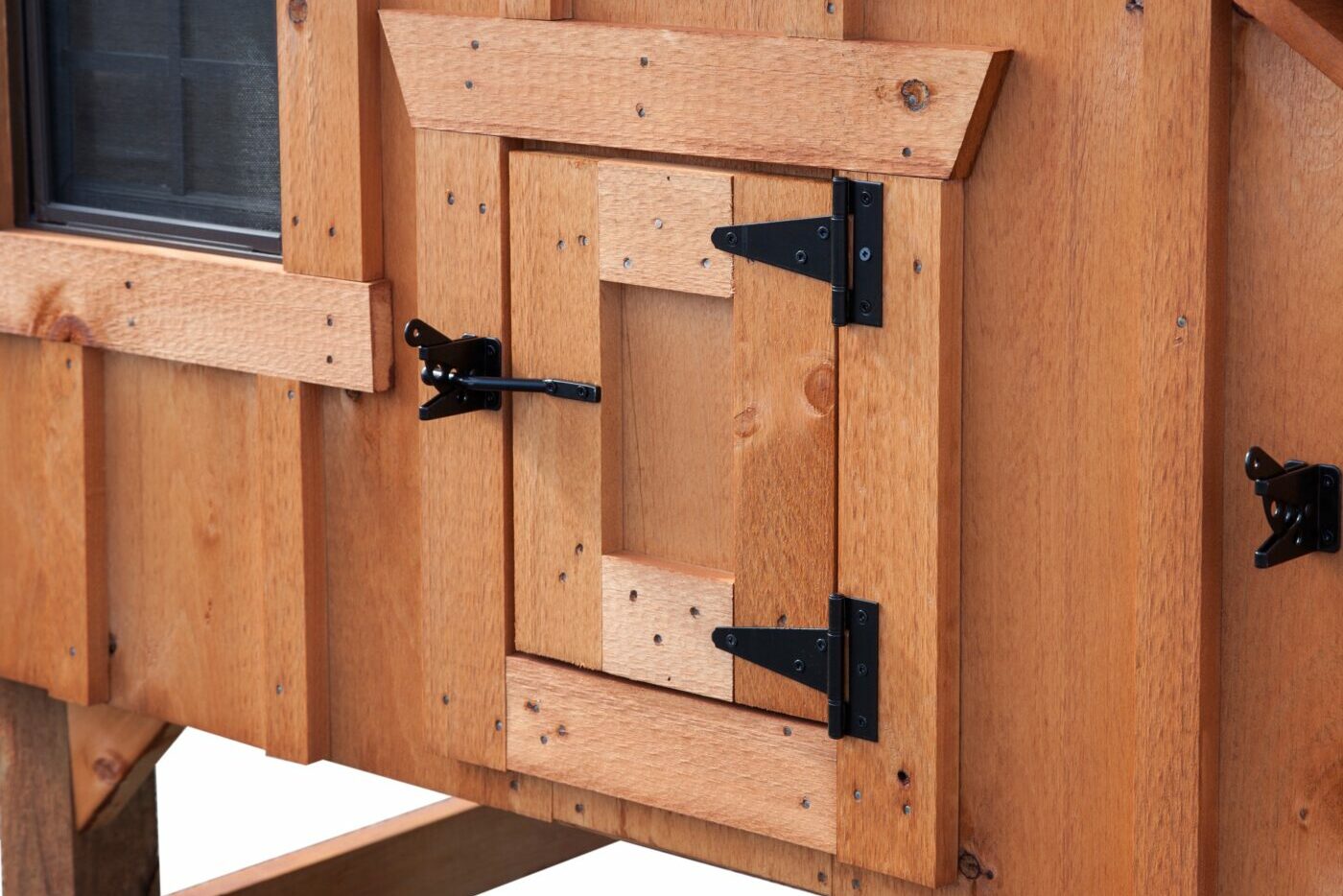
A chicken coop door is a small door that is installed on the side of a chicken coop to allow chickens to move in and out of the coop freely. At the hen house collection, we provide doors for chicken coops in high quality.
Chicken Ramp
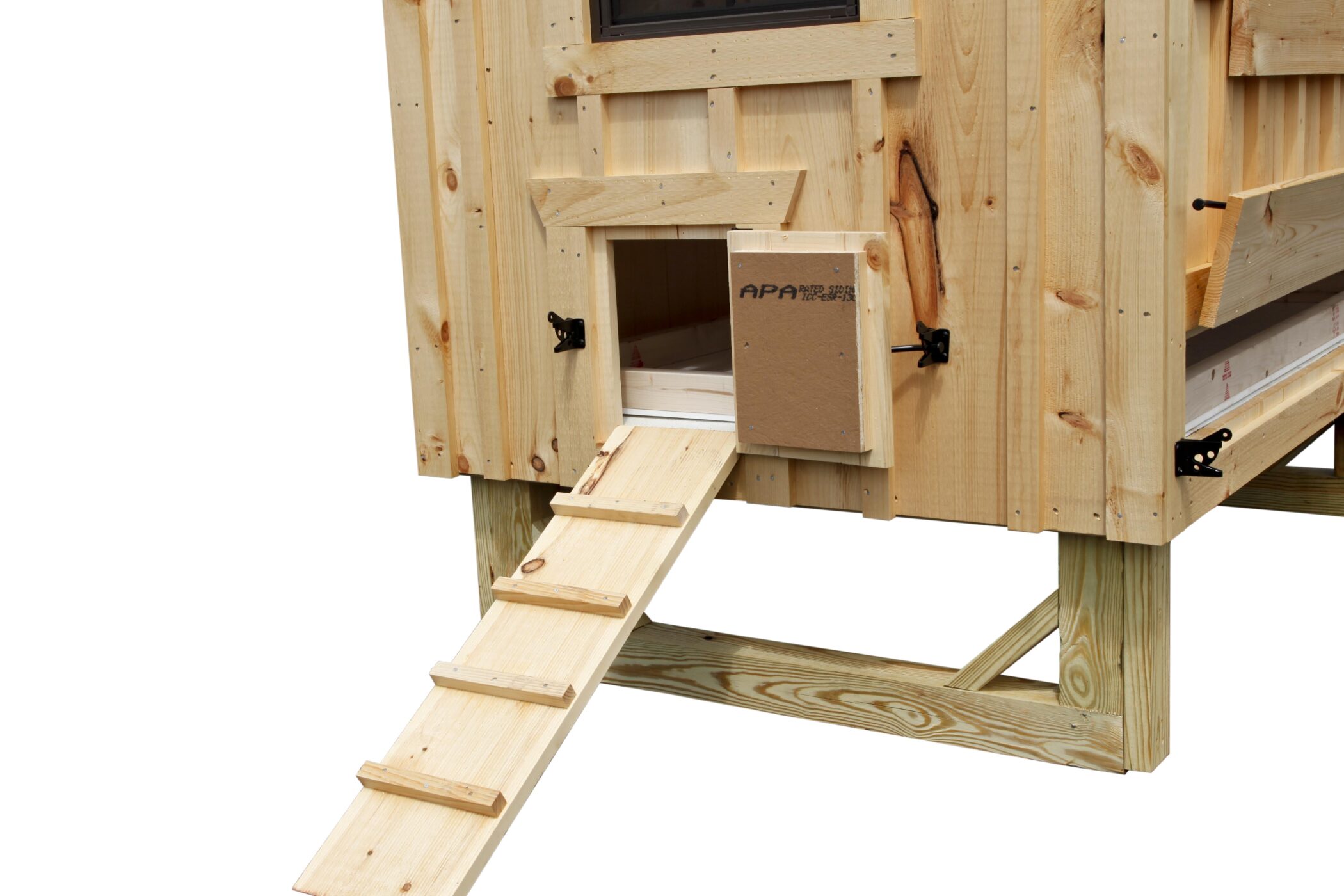
Adding a ramp to your chicken coop can make it easier for your chickens to get in and out of the coop. It also may help prevent little predators like rodents and snakes from easily accessing the coop. A ramp is something every chicken farmer should consider investing in.
Keyed Entry Door
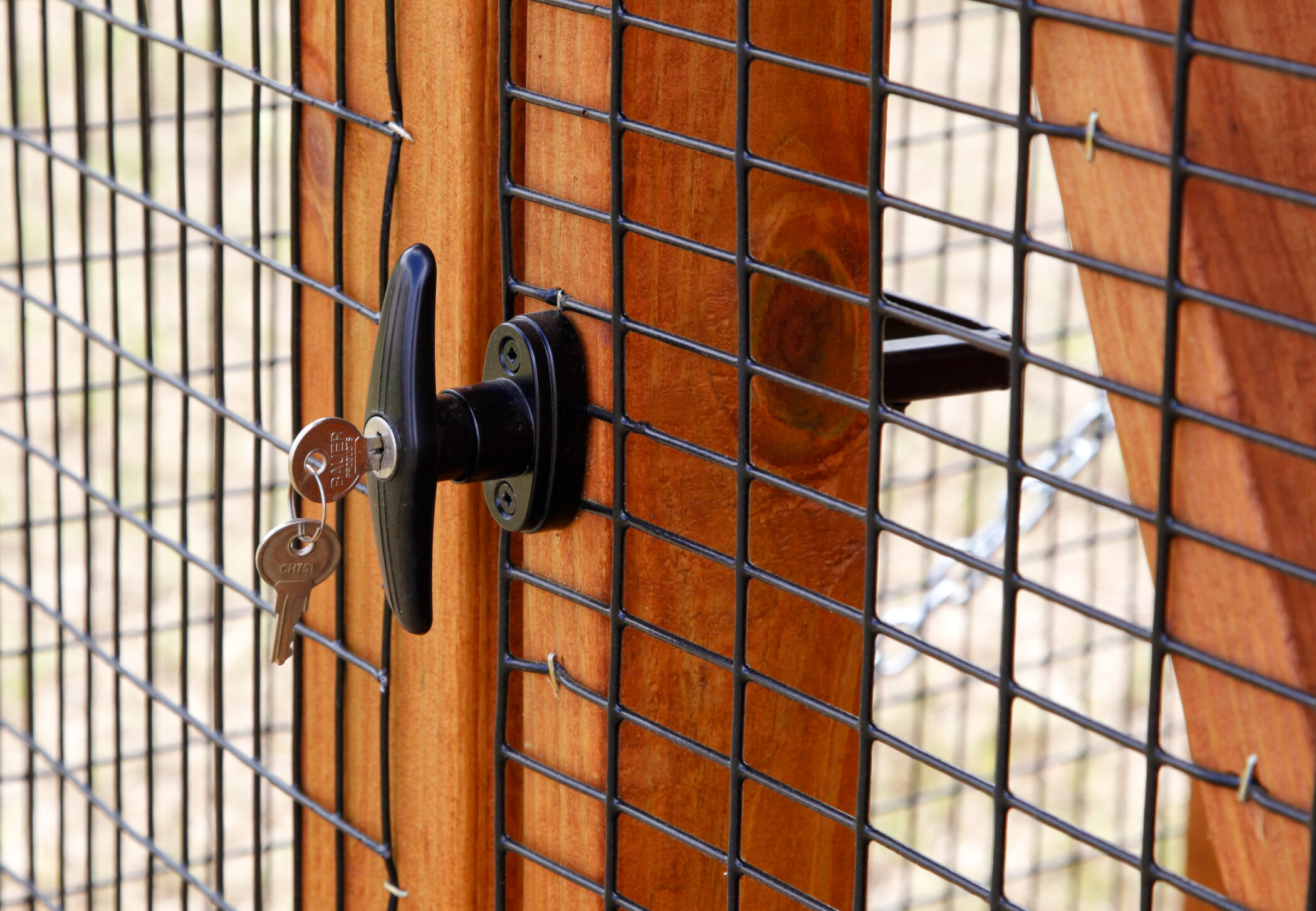
Adding this feature to your chicken coop will secure your coop against predators or other unwanted visitors, and it is more convenient than other types of locks, such as padlocks or combination locks.
Vent Lid or Vent
The vent is essential in any chicken coop to help regulate temperature, humidity, and air quality. Good ventilation can help prevent the buildup of bacteria, mold, and other pathogens that can cause illness in your birds.
Roosting Bar
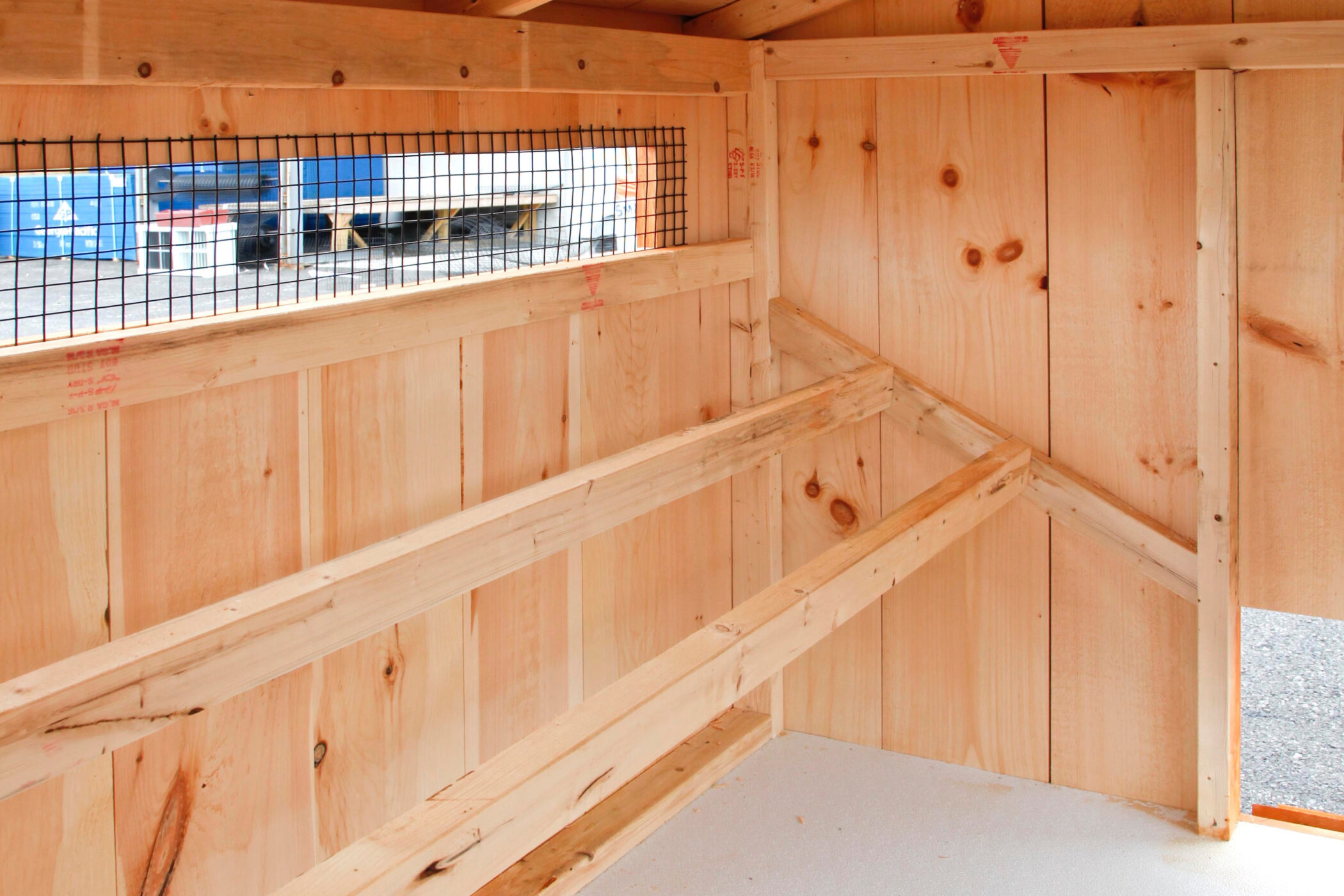
This feature in the chicken coop provides a designated space for your chickens to sleep at night and help them feel safe, secure, and comfortable. We offer heated roosting bars for your chickens to ensure they stay warm, especially during the cold months.
Window with Screen
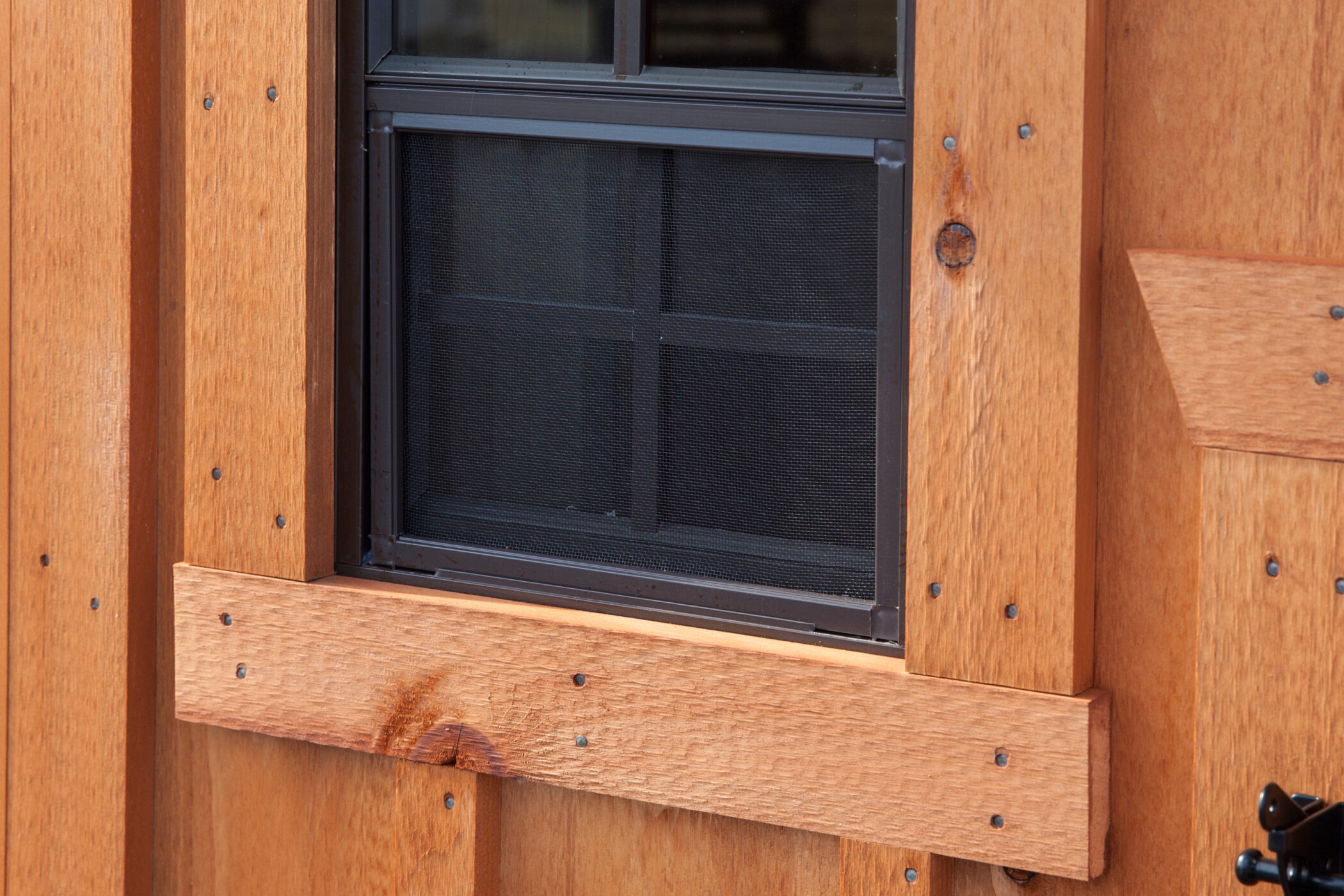
A window with a screen can provide additional ventilation as well as natural light to enter the coop. screens can help keep out pests such as flies, mosquitoes, and other insects that can carry disease and cause annoyance to your chickens.
Pressure-Treated Legs and Runners
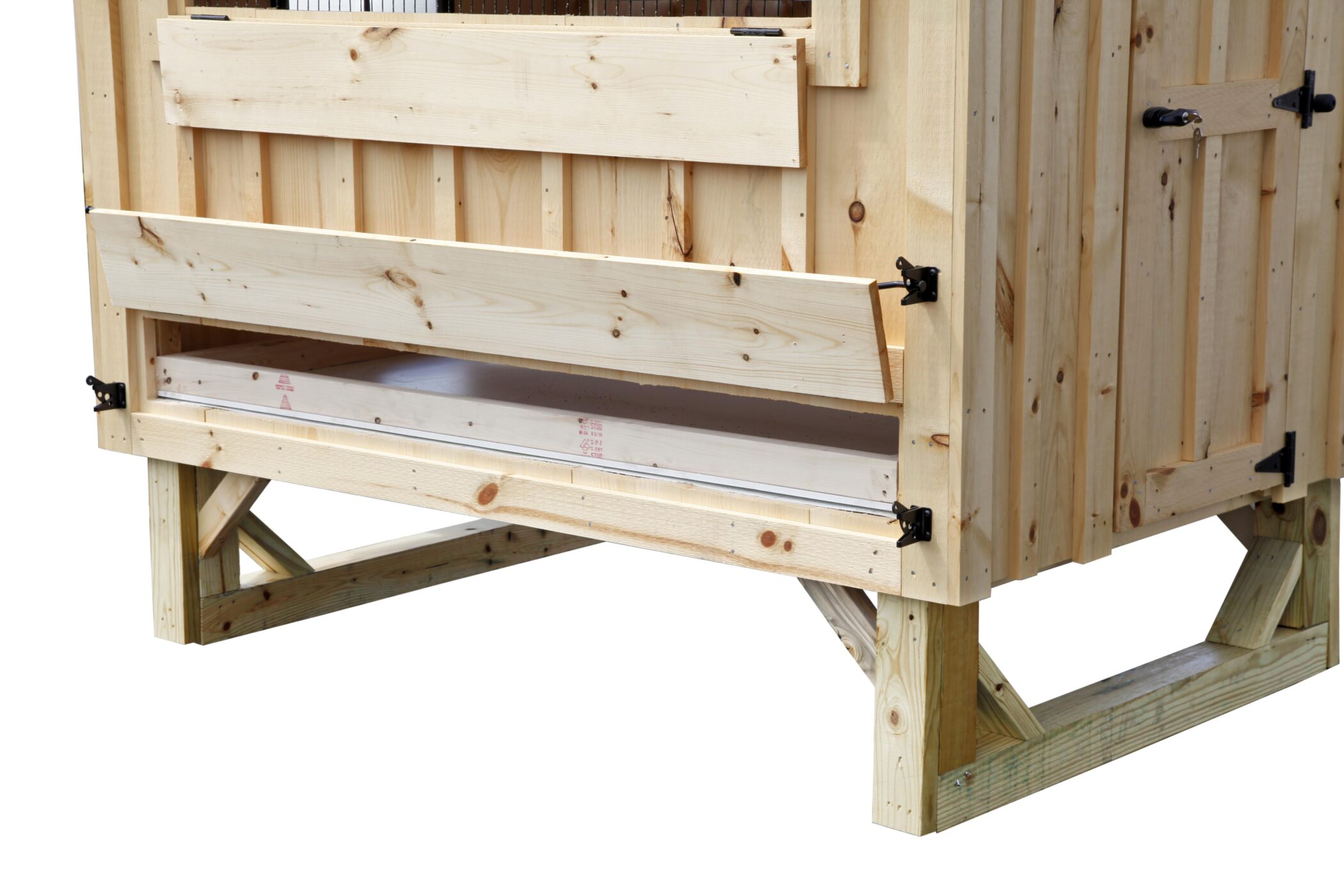
The runners of the chicken coop are the horizontal pieces that support the floor of the coop. Using pressure-treated runners can help prevent the wood from rotting and decaying caused by moisture in the coop. Additionally, using pressure-treated runners can prevent pests such as rodents and insects from burrowing into the coop through the floor.
Use Automatic Chicken Coop Feeder
An automatic chicken coop feeder is a device that can be used to provide feed to chickens in a coop without the need for manual feeding. These feeders can help provide consistent access to food for chickens and reduce the amount of time and effort required for daily feeding. Additionally, it can reduce the amount of food waste, as the feeder can dispense a set amount of food at predetermined times, helping to prevent overfeeding or underfeeding.
Chicken Coops from Hen House Collection
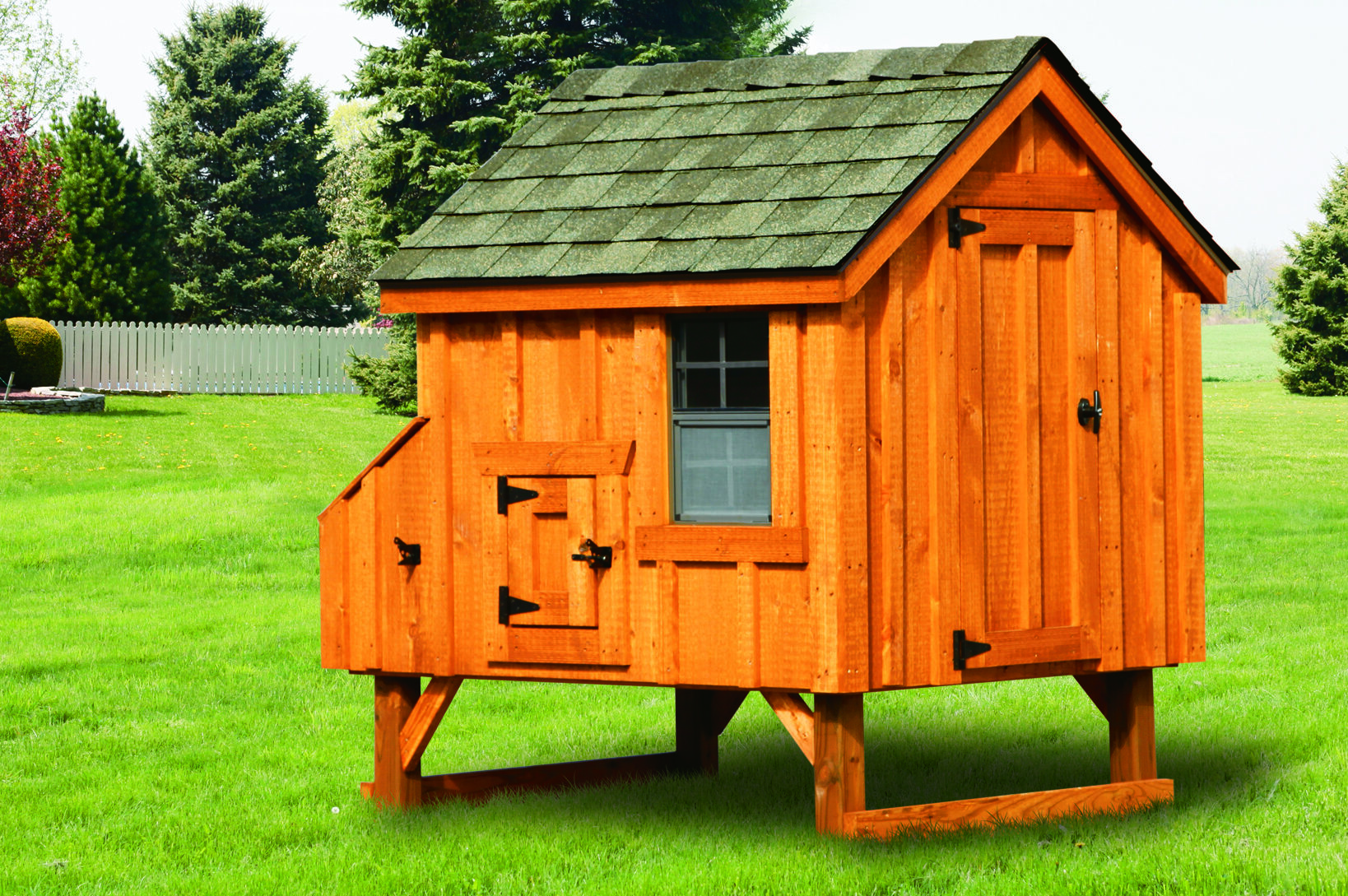
Turning a shed like a prefab mini barn into a chicken coop may be a very rewarding job for you and your chickens. Following the steps listed above will help you create a coop that is healthy and fitting for your birds. But If you have decided that you would rather use your shed for something else or would like to consider buying a coop made for your chickens, Hen House Collection has a large selection of customizable coops. Our prefab chicken coops and A-Frame Chicken Coops, to name a few, come in a variety of colors and can be styled and customized to fit your needs! Check out our coops and see what you can do for your hens!

